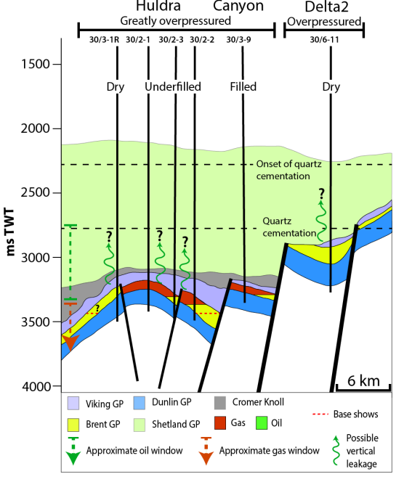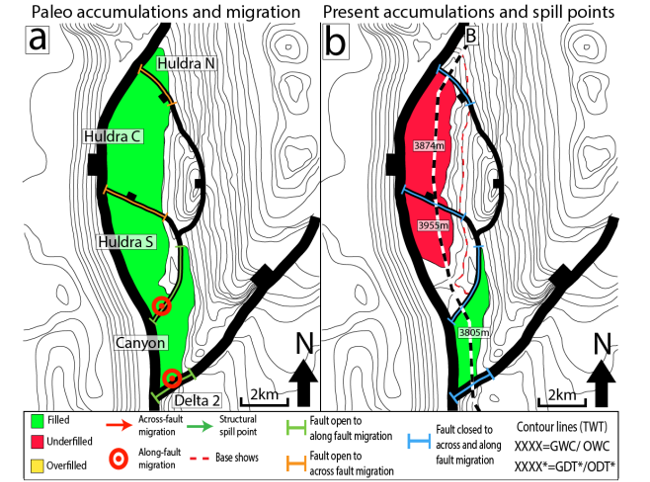Fault sealing: what controls fluid contact offsets across faults?
Hovedinnhold
Project description
Fault sealing traps bouyant fluids in the subsurface - those injected by humans (such as CO2) as well as those supplied by nature. The data base that is available for studying such trapping largely comes from the oil and gas industry. It is well known that, in general, fault sealing increases with burial depth and the amount of clay in the fault plane. Predictions of sealing capacity is however highly uncertain.
This project will investigate relationships between observed fault sealing and fault properties such as throw, strike, clay content and burial depth. The faults sealing properties of water as well as of hydrocarbons will be investigated. While the goal for this specific project is investigation of fault sealing in a restricted area (probably in the vicinity of Gullfaks), the results also are a part of a larger study to understand fault sealing as such. This project is organized in the Pestoh (Petroleum and CO2 Storage students of Hermanrud) group, which presently includes 1 Ph.D. student and three MSC students
The project work will include a broad variety of geoscience activities, such as seismic interpretation, well log analysis, pressure analysis, seal analysis and interpretation of seismic amplitude variations.

Proposed course plan during the master's degree (60 ECTS):
These are recommended the list will be supplemented and can be altered depending on the candidate:
GEOV252
GEOV261
GEOV272
GEOV274
GEOV300
GEOV362
External data:
Seismic data and structural model from Equinor

